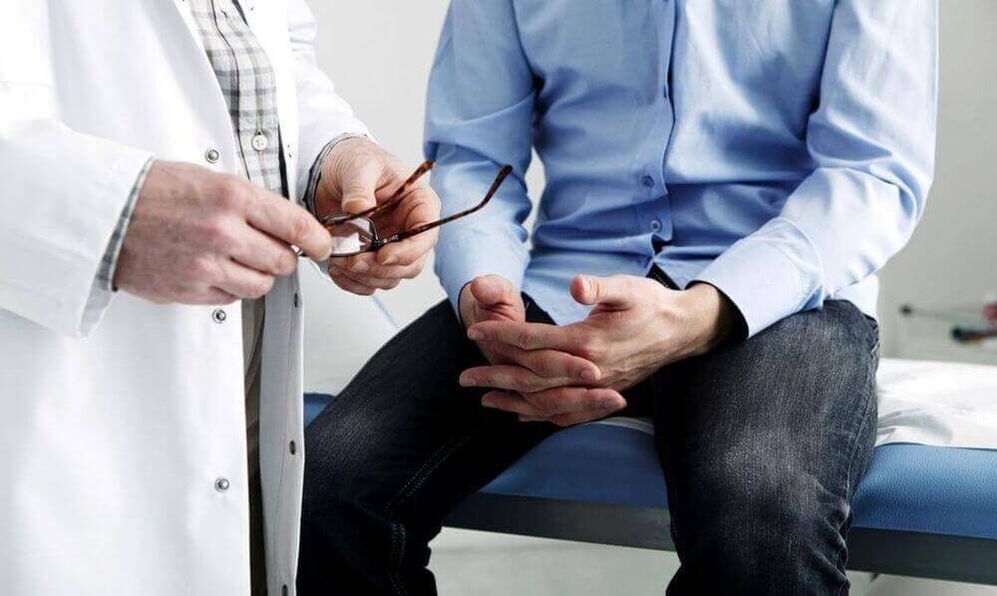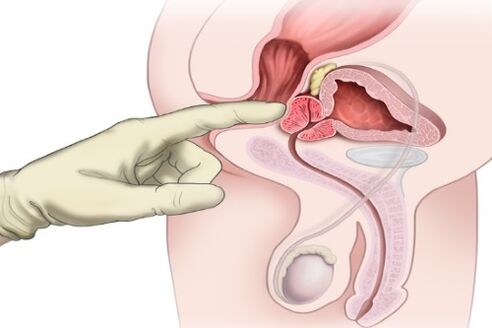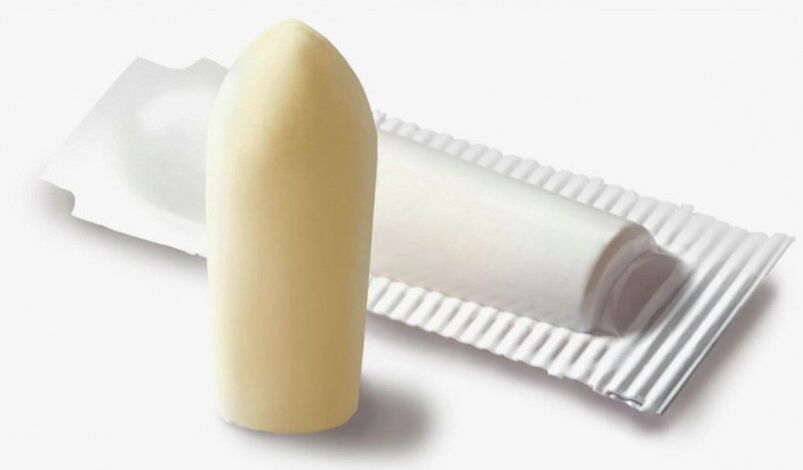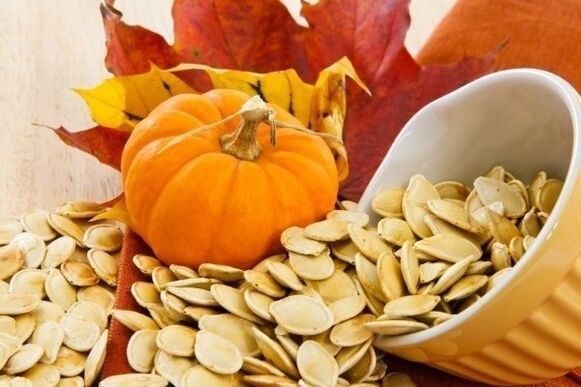Prostatitis is characterized as inflammation of the prostate gland tissue, which comes from the development of overload in it.
In the modern world, it is the most common urological disease in men of all ages. According to statistics, after the age of 30, prostatitis covers 30% of the male population, after 40 - 40%, after 50 - 50% and further in ascending order.
However, given the peculiarities of the diagnosis and the possibility of the disease progressing in latent form, the real figures are much higher.

Reasons for development
Currently, the causes of prostate development are divided into two major groups:
- Infectious - (sexually transmitted infections (penetration into the prostate tissue of the causative agent - microbes, viruses, bacteria, fungi, etc. ): also the presence of foci of chronic infection (chronic tonsillitis, sinusitis, kidney pathology), operations on organsof the pelvis etc. ).
- Non-infectious (stagnant) (decreased immunity, hypothermia, decreased physical activity, sedentary lifestyle, prolonged sexual abstinence and vice versa, excessive sexual activity, alcohol abuse, etc. ).
The development of prostatitis is facilitated by injuries, impaired circulation of blood and lymph in the pelvic organs, hormonal disorders (absolute or relative lack of androgen).
Thus, it is emphasized that the isolated entry of the pathogen into the tissues of the organ is not always and may not necessarily be the cause of the development of the disease. The most common pathogen identified is Escherichia coli (86%), followed by Klebsiella, Proteus, Enterococci, Pseudomonas aeruginosa. Regarding streptococcus, staphylococcus, chlamydia, mycoplasma, ureaplasma, the opinions of researchers about their importance in the development of the disease differ. It is extremely rare for specific pathogens (pale treponema, Koch bacillus, etc. ) to cause prostatitis.
Distribution
Currently, the international classification of prostatitis has been adopted, which is the most complete and covers all types of inflammation:
- Category I. Acute prostatitis;
- Category II. Chronic bacterial prostatitis;
- Category III. Chronic nonbacterial prostatitis / Chronic pelvic pain syndrome - a disease in which no infection lasting more than 3 months is detected;
- Subcategory III A. Chronic pelvic inflammatory pain syndrome (leukocytes are defined in prostate secretion);
- Subcategory III B. Chronic non-inflammatory pelvic pain syndrome (no leukocytes in prostate secretion);
- Category IV. Chronic asymptomatic prostatitis (leukocytes are present in the secretion of the prostate, the patient presents no complaints, the disease is detected by chance).
The first signs
The main signs of acute prostatitis are an increase in body temperature and frequent urination, which is accompanied by cramps and poor pressure. In addition, signs of prostatitis include a burning sensation in the perineum and pain in the rectum during bowel movements. In the stage of purulent inflammation, spontaneous opening of the abscess and pus coming out of the urethra or rectum is likely.
Symptom of a chronic form is burning in the urethra and perineum, discharge of pus at the end of the act of defecation or urination, increased fatigue and nervousness of the body.
Difficulty urinating with the prostate is very dangerous, which, in the absence of timely treatment, can lead to acute urinary retention. Men should not ignore such indirect signs of prostate development as a complete or partial decrease in sexual desire, accelerated ejaculation, sometimes painful erection, prolonged at night. All of these symptoms are characteristic of inflammation of the prostate gland, even at an uncomplicated stage and suitable for adequate treatment.
Symptoms
If acute prostatitis is simply impossible not to notice, then in chronic prostatitis many do not notice certain signs or do not pay special attention to them.
Let's list the main symptoms of prostatitis in men:
- Problems with urination. Due to the narrowing of the urethra, the current may become slow, thin, or intermittent. To empty, the patient has to make an effort, which should not be normal. Sometimes urine literally has to be squeezed drop-by-point, especially in the initial stage of the act of urination. Painful sensations often occur. Many patients have a frequent need to urinate (especially at night), this is due to irritation of the nerve endings. Even after going to the toilet, many have the feeling that the bladder is not completely emptied, this is due to the enlargement of the prostate and the squeezing of the bladder. In severe cases, involuntary leakage of urine or incontinence may occur.
- Painful sensations. As a rule, they are located in the perineum, pubis or testicles, groin or lumbar region. The pain can occur suddenly and pass just as quickly, often they are quite strong, but more often it has a dull or aching character.
- Sexual problems will inevitably arise. First, libido will decrease significantly. Second, erection problems may occur. Third, because of problems with ejaculation (ejaculation), the average duration of sexual intercourse will change: it can become short due to premature ejaculation or, conversely, too long due to delayed ejaculation. Fourth, the feelings will also change, as the orgasm will not be bright. Fifth, sperm volume will be significantly reduced (only a few drops may be released, which is not normal).
- Another characteristic symptom is problems with conception. If a man is planning a child, then with prostate, fertilization becomes impossible due to dysfunction or insufficient sperm motility.
- Discharge from the urethra. They are usually white in color and have a slippery structure and are more common in the morning.
- In the acute course, there is an increase in body temperature (up to 38-39 °), fever, deterioration of general condition, weakness, maltreatment and other similar manifestations. Such symptoms of prostatitis usually appear suddenly, without any preconditions.
In addition, many of them have psychological problems related to the symptoms listed above. A man can become insecure, his self-esteem will be greatly reduced, he will be depressed or nervous and irritable. Many representatives of the stronger sex are ashamed of such subtle problems and do not consider it necessary to talk about them, keeping everything to themselves. And this puts a lot of pressure on the psyche, changes behavior and in some cases can lead to depression or a nervous breakdown.
Chronic prostatitis
Many men do not pay much attention to the manifestations of prostatitis in the early stages. These are painful sensations without attention in the bladder area, a frequent desire to go to the toilet. Violation of ejaculation and normal erection is associated with the stronger sex with age and does not rush to see a doctor. Such a frivolous attitude leads to the development of chronic prostatitis.
So we list the common symptoms of different forms of chronic prostatitis:
- Feeling of discomfort and incisions in the urethra during urination or sexual intercourse, small serous-purulent discharge from the urethra (mainly after prolonged retention of urine).
- Discomfort and / or moderate pain in the form of "pain" and aggravation in the perineal region, which arise or worsen after drinking alcohol, physical activity, sexual intercourse. Sometimes they have a transient paroxysmal nature.
- Decreased ability to fertilize, which is caused by increased secretion acidity, decreased or lack of sperm motility and their agglutination (adhesion) from their heads.
- Frequent sudden urge to urinate (sometimes up to 3 times within 1 hour) and a feeling of insufficient emptying of the bladder, which is explained by a violation of the nervous regulation of the prostate, its muscle fibers and the bladder.
- Pain during orgasm or vague sensations of orgasm, ejaculation disorders, expressed in its premature duration or vice versa in excessive prolongation of sexual intercourse. These phenomena are associated with an inflammatory process in the area of seminal tuberculosis or scarring as a result of inflammation.
To diagnose the disease, you should see a urologist. With the help of tests, the doctor makes a diagnosis and prescribes a course of treatment with medication.
Diagnosing
To make an accurate diagnosis, a man must be examined by a doctor and tested. With prostate, the patient experiences pain from palpation in the perineal region. Internal palpation of the rectum shows the presence of swelling in the area of the prostate gland, it becomes dense to the touch. The patient complains of problems with the genitourinary system. After collecting the anamnesis, the patient should undergo a detailed blood test for the presence of protein excess, increased leukocyte count, and prostatic antigen.
To rule out infection, the patient must pass a stain from the urethra. The laboratory will inoculate the identified bacteria and test their susceptibility to certain types of antibiotic agents. For an accurate view, an ultrasound examination of the pelvic organs is performed. Clearly shows inflammation and enlargement of the prostate. If the gland is strongly enlarged, then on ultrasound you can see the presence of urine left in the bladder.
After passing all the tests and examinations, the man will be fully diagnosed and prescribed treatment.
Drugs for treating prostatitis in men: a list
Complex treatment for prostatitis of different types may include different combinations of the following methods:
- immunocorrective therapy;
- antibiotic therapy;
- hormone therapy;
- various physiotherapy procedures;
- prostate massage;
- lifestyle change;
- surgical interventions etc.
Medication treatment of prostatitis includes a variety of medications, including antibiotics:
- blocking alpha;
- hormonal drugs;
- muscle relaxants;
- immunomodulators;
- rectal suppositories;
- antibacterial drugs.
When treated with antibiotics, preference is given to fluoroquinolones and macrolides, as they are able to accumulate at the required concentration in prostate tissue.
- Fluorocinolates.
- Macrolides.
- Less used: penicillins, cephalosporins, tetracyclines.
Prostate massage
Prostate massage shows good results. The gland gets a complex effect. First of all, it becomes possible to remove from the body the inflammatory secretion that has accumulated in the prostate (it is released during massage). Improving blood circulation through these manipulations allows you to cope with all kinds of stagnation, and also contributes to the good penetration of antibiotics into the glandular tissue.

A set of exercises
Exercises for the prostate:
- Absolutely not a strenuous exercise used for both treatment and prevention. It consists of squeezing and relaxing the anus muscles. It is these muscles that are responsible for inhibiting flow during urination. Try contracting and unlocking a muscle group. This will increase blood flow to the gland area.
- Use a contrast bath to improve circulation. To do this, direct the flow of water to the perineum. First, 30 seconds of very hot water, then 10 seconds of cold water.
- In the absence of acute symptoms, you can massage yourself. This is done to improve blood circulation. Exercise is best done when you are lying down. The point for massage is the gap between the anus and the scrotum. The pressures should be strong but not aggressive. The time is 3-5 minutes.
Be sure to check with your doctor before exercising. Sometimes their use is categorically unacceptable.
Immunocorrection
Decreased immunity negatively affects health.
It is this factor that is one of the fundamental in the development of the disease and its aggravation. Long-term courses of antibiotics, which are mandatory for prolonged prostatitis, also reduce the body's defenses. Therefore, the patient is advised to consult an immunologist to select a strategy for performing immunocorrection.
Physiotherapy
Physiotherapy for chronic prostatitis aims to activate blood circulation.
For this purpose, the patient is exposed to a laser, ultrasound and magnetic vibrations are used. In some cases, these procedures are replaced by warm medical enemas, which are given to the patient regularly. Recommend sitz baths, mud treatment, mineral waters.
Candles
All suppositories for the treatment of prostatitis have one of the properties: pain relief (non-steroidal drugs), relief of spasms (based on papaverine), elimination of the inflammatory process (contain an antibiotic).

Alternative methods of treating prostatitis
Treatment of prostatitis at home is carried out only with uncomplicated forms or chronic recurrence. Traditional methods can increase the body's resistance to infections and relieve pain.
- Pumpkin seeds have long been used by healers in the treatment of prostatitis. They are a good and very affordable folk remedy for this condition. Since these seeds contain a lot of zinc, which is necessary for every man at any age, they quickly cure prostatitis. You just need to eat 30 seeds a day before the meal. This is exactly the daily proportion of zinc for the body.
- The seeds and roots of the plant are suitable. The crushed roots of the plant are boiled for 10 minutes in half a glass of raw material per 1 liter of water. The whole amount of liquid is drunk in equal parts instead of water. The seeds are boiled in 4 teaspoons for a glass of boiling water. Insist 40 minutes in a saucepan or 15 minutes in a thermos. Consume about 3-5 times a day for one tablespoon.
- The main ingredient is hazelnut. To treat prostatitis, you need to take either hazelnut bark or leaves. You can create both components alternately, alternating between them. Just keep in mind that the bark should be boiled twice as long as it is stronger. So take a tablespoon of hazelnut leaves (or peel) and boil it in a glass of boiling water. Close the lid tightly and wait half an hour. Then drain and take 1/4 cup 4 times a day. It is better to use fresh twigs every time, but you can also use the ones used several times. Usually one week of such procedures is enough - and the prostate goes away.
- To treat the disease candles are made, which are stored in the refrigerator. For the dough, take 1 teaspoon of honey, 1 egg and about 3 tablespoons of flour. The components are mixed until smooth, forming candles. Used in two courses in the morning and in the evening, 1 piece for 1 month with an interval of 10 days.
- Celandine is used with caution. The plant is poisonous, an overdose leads to severe poisoning. In parallel, celandine medicine will clear the body of polyps, neoplasms, cysts and prevent prostate adenoma. Freshly squeezed juice is diluted with alcohol in equal parts. Drink daily, diluting in 50 ml of water. Start treatment with 1 point, increasing the concentration by 1 point every day for 60 days. After 10 days, the course is repeated.
Most folk remedies are used daily 1-3 times in courses of 20-30 days. Treatment with home remedies from herbs lasts longer because of their mild effect than medication, but is safer for the body, especially in the presence of concomitant diseases of the intestines and stomach. Treatment should be accompanied by gymnastics: raising the legs, squatting. Intense walking is recommended for 15-30 minutes a day.

Complications of prostatitis
In the absence of timely and adequate treatment, prostatitis can be complicated by the following conditions:
- development of chronic prostatitis;
- bladder obstruction;
- development of infertility;
- recurrent cystitis;
- narrowing of the urethra;
- pyelonephritis;
- prostate abscess;
- sepsis.
Some of the above conditions require urgent surgical intervention!
Preventive measures
Prevention comes down to avoiding provocative factors. A healthy lifestyle, protected sex and the presence of a partner will reduce the likelihood of genitourinary system infection. Overall strengthening of the body and increased immune defense are also a preventative measure for prostatitis.






























